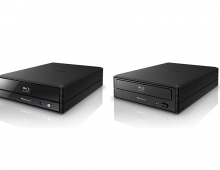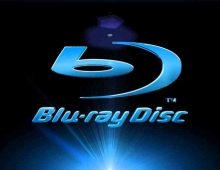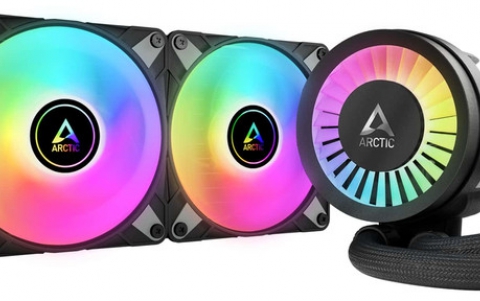
High-Def DVD Hardware Modifications Are Necessary to Implement Upcoming Content Protection Technologies
The Advanced Access Content System (AACS) content protection technology used in HD DVD and Blu-Ray formats finaly implements the revocation of compromised devices and Audio Watermarking functionalities.
Both new technologies are included in the final specifications of the AACS system and are expected to act against copying and ripping high-definition videos from Blu-ray and HD DVD discs.
As is has been widely discussed, the AACS technology requires the interaction of both player and the HD-DVD/Blu-Ray disc (movie) in order to allow a movie to be played. Both players and movies include specific keys that are essential for the authentication process that allows the reproduction of a disc. An AACS-secure player key is combined with a disk key (read from the disk) to create a new content key, which is used to descramble the contents. However, the weakness of the system was unveiled within months of HD disks coming to market: a software player for the PC became compromised, as someone found the player key hidden in system memory. In the following months, over 100 content keys were published on the Internet, offering customers an easy way to bypass the AACS protection. As a result, the AACS LA had to accelerate the implementation of the hardware revocation technology.
"Designers of AACS contemplated such a problem and made it possible to revoke a compromised player," says ABI Research principal analyst Steve Wilson. "The revocation feature is a significant new capability of the HD DVD content protection system, as players can be revoked by changing the disk key on new DVD releases. This key, when combined with a targeted player key, will fail to create a key that can descramble the disk contents. And in order for the new disks to work, the player needs to be updated to a new version."
So no matter if we are talking about a software or a hardware HD DVD/Blu-Ray player, the new movie discs require players to be frequently updated. The update procedure in case of a HD player is done through the internet.
Another weapon against copying high-definition videos is the Audio Watermarking technology. It was part of the Final AACS specifications, together with the Managed Copy and the Digital Only Token technologies. Audio Watermark is again used as a discretion of content providers to combat piracy. An inaudible signal is inserted into the audio track of a HD movie. However, the hardware released in the past and was designed according to the interim AACS specifications are not able to support Audio Watermark, unless they are updated. On the other hand, hardware that support the Final AACS specs will detect and respond to the Watermark in pirated content.
"The watermarking process tags audio content in such a way that analog copies will be rejected by the player," said ABI Research. "Content owners could unobtrusively tag their original source material and facilitate source detection of pirated material." Watermarking is already in use in theatre content source.
"Watermarking algorithms and techniques are not secret," concludes ABI Research. "But in order to break the watermark, they would require access to encryption keys which can be stored in protected hardware locations. Such hardware resources are becoming commonplace in consumer electronics solutions."
AACS hopes that the new technologies will be able to stop the piracy of HD DVD and Blu-Ray content. However, it is unclear whether this required frequent update in the firmware of the HD DVD and Blu-Ray hardware will be easily followed by hardware makers, and of course the consumers themselves.
Other technologies included in the AACS final specifications include the Managed Copy, the Image Constrain Token and the Digital Only Token.
Managed Copy technologies such as the CPRM, VCPS, WMDRM and MagicGate are set to enable authorized movement of content onto portable devices and home networks. First generation of Blu-Ray and HD DVD hardware were allowed to be managed copy-ready.
Image Constrain Token is a technology applicable to the analog outputs of a player. It restricts the output of Full High Definition content through the analog ports of a player, downsizing it at a resolution of 960x540 p - still higher than current standard DVDs. It was an optional measure proposed in order to encourage industry to adopt protected digital interconnection such as the HDMI.
Digital Only Token further restricts content from flowing out of analog outputs. But if employed, the discs are required to be clearly labeled to avoid consumer confusion.
But the goal of the AACS LA is to completely phase-out the analog outputs in hardware as well as the analog broadcastings in the U.S. and Japan, possibly by 2013. In 2010, analog outputs are expected to be limited to SD Interlace modes only (i.3., Composite, S-Video, 480i component).
As is has been widely discussed, the AACS technology requires the interaction of both player and the HD-DVD/Blu-Ray disc (movie) in order to allow a movie to be played. Both players and movies include specific keys that are essential for the authentication process that allows the reproduction of a disc. An AACS-secure player key is combined with a disk key (read from the disk) to create a new content key, which is used to descramble the contents. However, the weakness of the system was unveiled within months of HD disks coming to market: a software player for the PC became compromised, as someone found the player key hidden in system memory. In the following months, over 100 content keys were published on the Internet, offering customers an easy way to bypass the AACS protection. As a result, the AACS LA had to accelerate the implementation of the hardware revocation technology.
"Designers of AACS contemplated such a problem and made it possible to revoke a compromised player," says ABI Research principal analyst Steve Wilson. "The revocation feature is a significant new capability of the HD DVD content protection system, as players can be revoked by changing the disk key on new DVD releases. This key, when combined with a targeted player key, will fail to create a key that can descramble the disk contents. And in order for the new disks to work, the player needs to be updated to a new version."
So no matter if we are talking about a software or a hardware HD DVD/Blu-Ray player, the new movie discs require players to be frequently updated. The update procedure in case of a HD player is done through the internet.
Another weapon against copying high-definition videos is the Audio Watermarking technology. It was part of the Final AACS specifications, together with the Managed Copy and the Digital Only Token technologies. Audio Watermark is again used as a discretion of content providers to combat piracy. An inaudible signal is inserted into the audio track of a HD movie. However, the hardware released in the past and was designed according to the interim AACS specifications are not able to support Audio Watermark, unless they are updated. On the other hand, hardware that support the Final AACS specs will detect and respond to the Watermark in pirated content.
"The watermarking process tags audio content in such a way that analog copies will be rejected by the player," said ABI Research. "Content owners could unobtrusively tag their original source material and facilitate source detection of pirated material." Watermarking is already in use in theatre content source.
"Watermarking algorithms and techniques are not secret," concludes ABI Research. "But in order to break the watermark, they would require access to encryption keys which can be stored in protected hardware locations. Such hardware resources are becoming commonplace in consumer electronics solutions."
AACS hopes that the new technologies will be able to stop the piracy of HD DVD and Blu-Ray content. However, it is unclear whether this required frequent update in the firmware of the HD DVD and Blu-Ray hardware will be easily followed by hardware makers, and of course the consumers themselves.
Other technologies included in the AACS final specifications include the Managed Copy, the Image Constrain Token and the Digital Only Token.
Managed Copy technologies such as the CPRM, VCPS, WMDRM and MagicGate are set to enable authorized movement of content onto portable devices and home networks. First generation of Blu-Ray and HD DVD hardware were allowed to be managed copy-ready.
Image Constrain Token is a technology applicable to the analog outputs of a player. It restricts the output of Full High Definition content through the analog ports of a player, downsizing it at a resolution of 960x540 p - still higher than current standard DVDs. It was an optional measure proposed in order to encourage industry to adopt protected digital interconnection such as the HDMI.
Digital Only Token further restricts content from flowing out of analog outputs. But if employed, the discs are required to be clearly labeled to avoid consumer confusion.
But the goal of the AACS LA is to completely phase-out the analog outputs in hardware as well as the analog broadcastings in the U.S. and Japan, possibly by 2013. In 2010, analog outputs are expected to be limited to SD Interlace modes only (i.3., Composite, S-Video, 480i component).





















